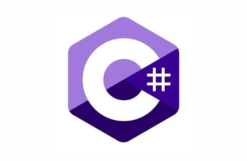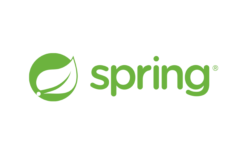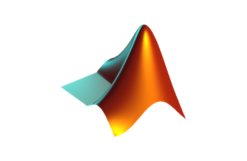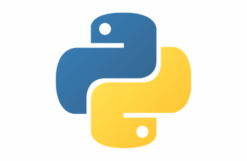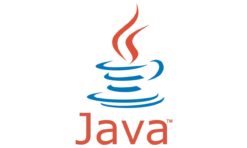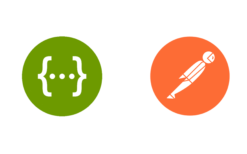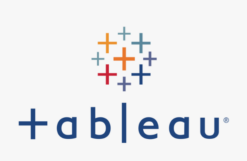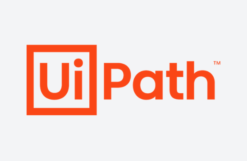Duration: 4 days – 28 hrs.
Overview
In this Python training course, students learn to program in Python.
Python is a widely used, open-source programming language that is especially suited for a wide range of applications including web development, machine learning, and data science. This Python training course provides the foundations for you to start writing Python applications. This training course emphasis the core libraries and most useful libraries developed by the Python. Python drives businesses and is used by programmers as one of the most popular programming languages.
Objectives
- Work with variables and Python data types
- Work with simple modules
- Output data with print()
- Collect user input
- Define and call functions
- Work with parameters and arguments
- Use variable scope
- Create and import modules
- Use math in Python
- Work with the math and random modules
- Work with string basics
- Work with special characters
- Work with multi-line strings
- Index and slice strings
- Work with common string operators and methods
- Format strings
- Use built-in string functions
- Work with lists, tuples, ranges, dictionaries, and sets
- Work with the *args and **kwargs parameters
- Work with virtual environments
- Install packages with pip
Audience
- Students new to the language who may or may not have experience with other programming languages. The course was written using Python 3.8, but is relevant for all students using Python 3.
- Anyone wanting to develop applications using Python. Prior programming experience is not required.
Pre- requisites
- Basic Networking knowledge
Course Content
Introduction to Python
- What is Python?
- Why Python?
- Who Uses Python?
- Characteristics of Python
- History of Python
- What is PSF?
- Python Versions
- How to Download and Install Python
- Install Python with Diff IDEs
Python Basics
This module explains how to get started using Python.
- Getting Familiar with the Terminal Running Python
- Running a Python File
- Literals
- Variables
- Constants and Deleting Variables Writing a Python Module
- print () Function
- Collecting User Input
- Reading from and Writing to Files Exercise: Working with Files
Lab 01
Exercise: Hello, world!
Exercise: Exploring Types Exercise: A Simple Python Script Exercise: Hello, You!
Exercise: Working with Files
After completing this module, students will be able to:
- Work with Python, use variables, output data, collect user input, and write simple Python functions and modules.
Functions and Modules
You have seen some of Python’s built-in functions. In this lesson, you will learn to write your own.
- Defining Functions
- Variable Scope
- Global Variables
- Function Parameters
- Returning Values
- Returning Values
- Importing Modules
- Methods vs. Functions
Lab 01
Exercise: A Function with Parameters
Exercise: Parameters with Default Values
After completing this module, students will be able to:
- Define functions with or without parameters
- Understand variable scope and how to import modules.
Math
Python includes some built-in math functions and some additional built-in libraries that provide extended math (and related) functionality. In this lesson, we’ll cover the built-in functions and the math and random libraries.
- Arithmetic Operators
- Assignment Operators
- Precedence of Operations
- Built-in Math Functions
- The math Module
- The random Module
Lab 01
Exercise: Floor and Modulus
Exercise: How Many Pizzas Do We Need? Exercise: Dice Rolling
After completing this module, students will be able to:
- Do basic math in Python.
- Use the math and random modules for extended math functionality.
Python Strings
This module explains how to work with Python Strings.
- Quotation Marks and Special Characters String Indexing
- Slicing Strings
- Concatenation and Repetition Combining Concatenation and Repetition Python Strings are Immutable
- Common String Methods
- String Formatting
- Formatted String Literals (f-strings) (introduced in Python 3.6) Built-in String Functions
Lab 01
Exercise: Indexing Strings
Exercise: Slicing Strings
Exercise: Repetition
Exercise: Playing with Formatting
Exercise: Outputting Tab-delimited Text
After completing this module, students will be able to:
- Manipulate and format strings.
Iterables: Sequences, Dictionaries, and Sets
Iterables are objects that can return their members one at a time. The iterables we will cover in this lesson are lists, tuples, ranges, dictionaries, and sets.
- Definitions
- Sequences
- Lists
- Sequences and Random Tuples
- Ranges
- Converting Sequences to Lists
- Indexing
- Slicing
- min(), max(), and sum()
- Converting between Sequences and Strings Unpacking Sequences
- Dictionaries
- The len() Function
- Sets
- *args and **kwargs
Lab 01
Exercise: Remove and Return Random Element
Exercise: Simple Rock, Paper, Scissors Game
Exercise: Creating a Dictionary from User Input
After completing this module, students will be able to:
- Understand lists, tuples, ranges, dictionaries, and sets.
- Understand the *args and **kwargs parameters.
Virtual Environments
A virtual environment provides a self-contained directory tree with its own Python installation and additional packages necessary for the project(s) being done in that environment. As such, scripts can be run in a virtual environment that have dependencies that are different from those in other development projects that may be running in the standard environment or in separate virtual environments.
- Packages with pip
Lab 01
Exercise: Creating, Activating, Deactivating, and Deleting a Virtual Environment
Exercise: Working with a Virtual Environment
After completing this module, students will be able to:
- Create and use virtual environments
- Install packages with pip
Flow Control
This module explains how to change the flow by using conditional statements and loops.
environments.
- Conditional Statements
- Compound Conditions
- The is and is not Operators
- all() and any() and the Ternary Operator In Between
- Loops in Python
- break and continue
- Looping through Lines in a File
- The else Clause in Loops
- The enumerate() Function
- Generators
- List Comprehensions
Lab 01
Exercise: All True and Any True
Exercise: Word Guessing Game
Exercise: for…else
After completing this module, students will be able to:
- Write if-elif-else conditions and to loop through sequences.
Exception Handling
This module explains how to anticipate and handle exceptions gracefully.
- Exception Basics
- Generic Exceptions
- The else and finally Clauses
- Using Exceptions for Flow Control
- Raising Your Own Exceptions
Lab 01
Exercise: All True and Any True
Exercise: Word Guessing Game
Exercise: for…else
After completing this module, students will be able to:
- Write if-else-if conditions and to loop through sequences.
Python Dates and Times
This module explains how to use Python’s built-in modules to work with dates and times.
- Understanding Time
- The time Module
- Time Structures
- Times as Strings
- Time and Formatted Strings Pausing Execution with time.sleep()
- The datetime Module
- datetime.datetime Objects
- datetime.timedelta Objects
Lab 01
Exercise: What Color Pants Should I Wear?
Exercise: Report on Departure Times
After completing this module, students will be able to:
Work with the time and datetime modules.
File Processing
This module explains how to process files.
Opening Files
Writing to Files The os Module os.walk()
The os.path Module
A Better Way to Open Files
Lab 01
Exercise: Finding Text in a File
Exercise: Writing to Files
Exercise: List Creator
Exercise: Comparing Lists
After completing this module, students will be able to:
- Work with files and directories on the operating system


